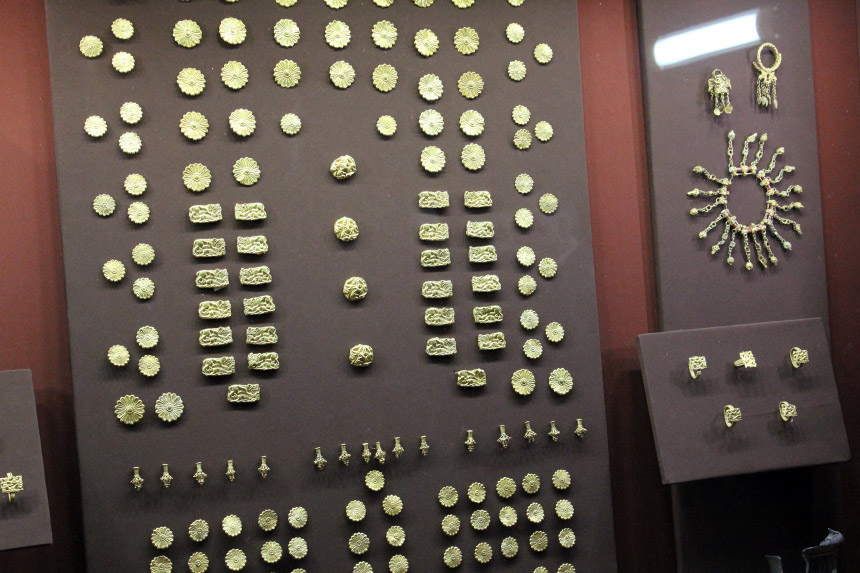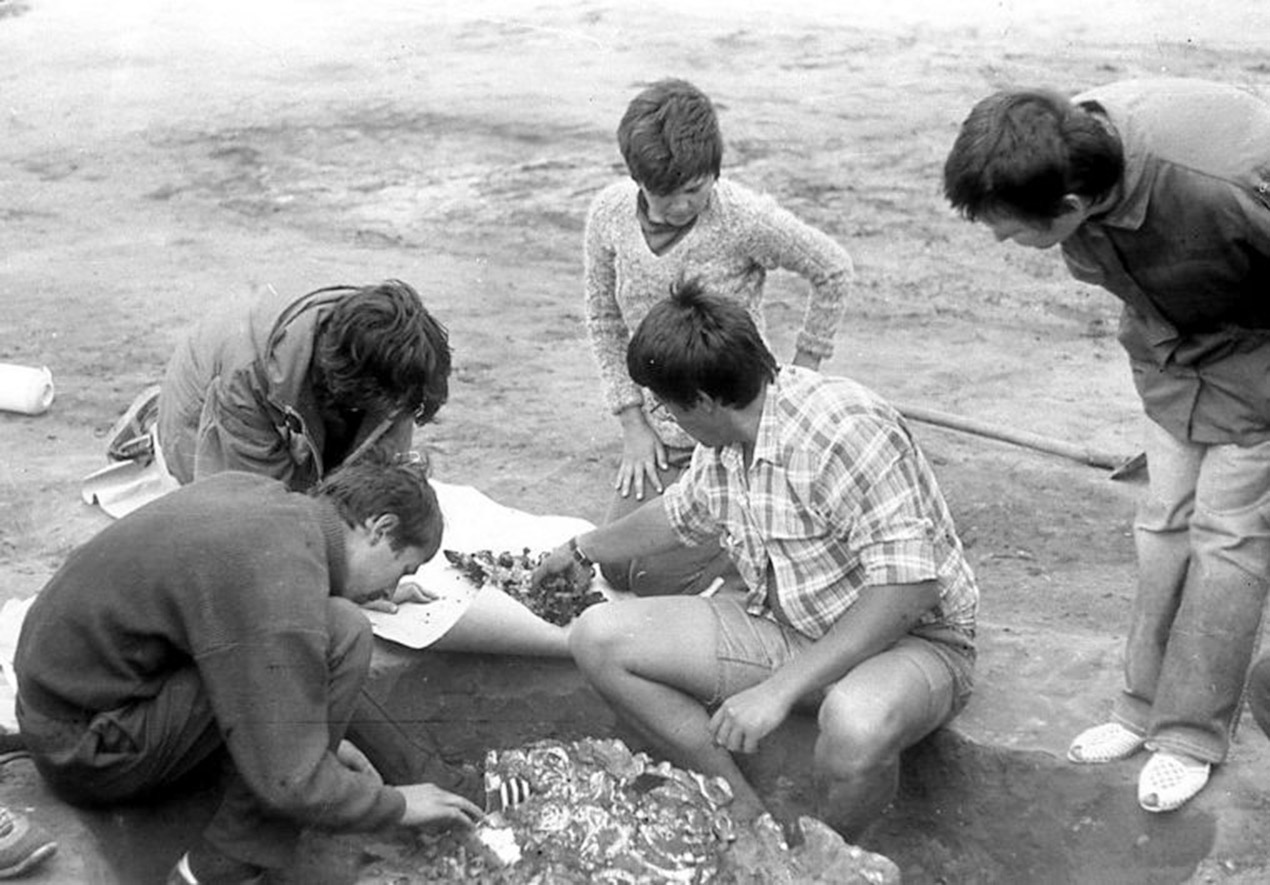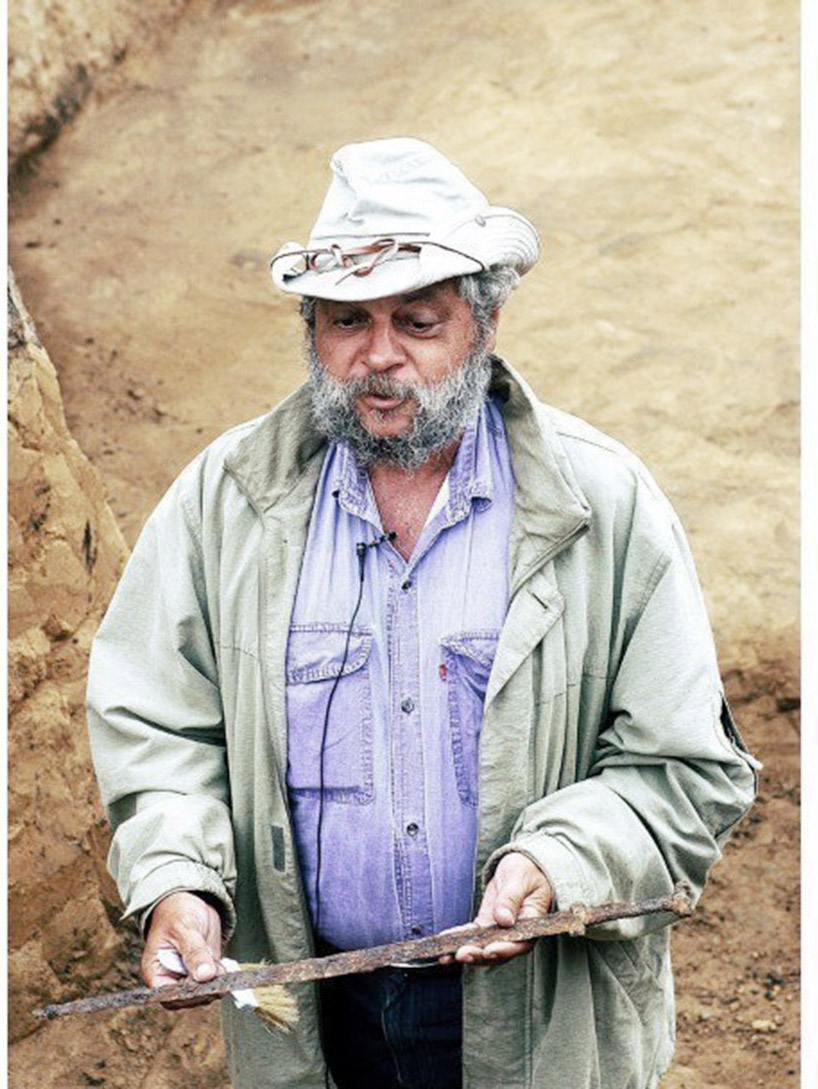Discover a woman skeleton of about 35 years old In Filippovka, wearing fancy gold-plated clothes. Almost 400 gold appliques were sewn to the dress of the individual buried.
A unique archaeological collection of gold and silver items from the 5th–4th centuries BC was found as a result of excavations of the Filippovsky burial mounds in the south of the Orenburg region in the late 1980s. Today, “Sarmatian gold” is part of the collection of the Orenburg Governor’s Museum of History and Local Lore.

Exhibits of the exposition “Gold of the Sarmatians”
The excavations were carried out by Bashkir archaeologists, and despite the fact that the discovered Sarmatian burials were located on the territory of the Orenburg province, all the artifacts found were sent to the museums of Ufa.

Clearing the cache. From the personal archive of Tatyana Surina
In the 1980s, excavations were suspended due to lack of funds. At that time, out of 25 mounds, 17 had been explored. Research was resumed only at the beginning of the 21st century. Expeditions of the Institute of Archeology of the Russian Academy of Sciences in 2004, 2013–2014 were led by the famous Russian archaeologist and anthropologist, head of the sector of Scythian-Sarmatian archeology of the Institute of Archeology of the Russian Academy of Sciences, Leonid Teodorovich Yablonsky. His expeditions discovered 9 burials.

Leonid Teodorovich Yablonsky
The most valuable find was the virtually untouched tomb of a noble Sarmatian “Amazon” of the 5th–4th centuries BC, discovered in 2013 during excavations of the so-called “royal” mound near the village of Filippovka, Ilek district, Orenburg region. Under a four-meter thick layer of sand lay a female skeleton, strewn with gold – bracelets on her wrists, rings with stones on each finger. In her left hand the woman held a silver mirror with a gold handle and an object that looked like a rod. The skeleton lay on a multilayer mat with rich and varied grave goods. Nearby were a wicker chest filled to the brim with various items, including a gold breast ornament, a glass vessel of Persian manufacture, a wooden bowl with gold handles in the shape of bear figurines, leather bags of paints, two stone “palettes” for diluting paints used for tattoos, and iron gilded tattoo and sewing needles and bone spoons for diluting paints with handles decorated in animal style, a quiver with arrows with bronze tips and many other things.

Exhibits of the exposition “Gold of the Sarmatians”
After research and restoration, these unique finds replenished the funds of the Orenburg Governor’s Museum of History and Local Lore and subsequently became the basis of the “Golden Pantry” exhibition.
Related Post
Kandake from Nuba of Ancient Egypt (Kemet). The sister of the king of Kush (Ancient Sudan) who due to the matrilineal succession,
” Artifact Unlocking the Secrets: Did Ancient Humans Encounter an Advanced Civilization Long Ago?”
An iron bar was buried with Sozopol’s toothless “vampire skeleton” to prevent it from emerging from the grave.
7,000-year-old sandals crafted from esparto grass. Discovered in Cueva de los Murciélagos, Spain, dating back to 5200-4800 BC.7,000-year-old sandals crafted from esparto grass. Discovered in Cueva de los Murciélagos, Spain, dating back to 5200-4800 BC.
Breaking news: Revealing the unimaginable technology of ancient Egypt: Traveling to the realm of the impossible
Revealing ancient wonders: Discovery of a unique human hybrid skeleton from millions of years ago.